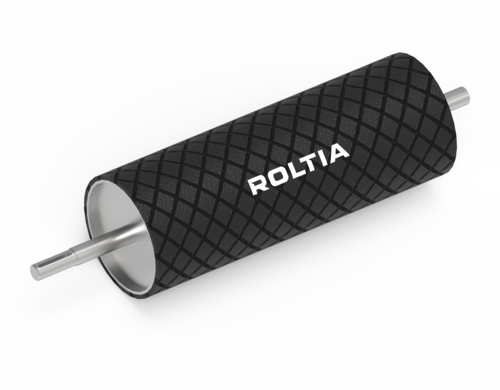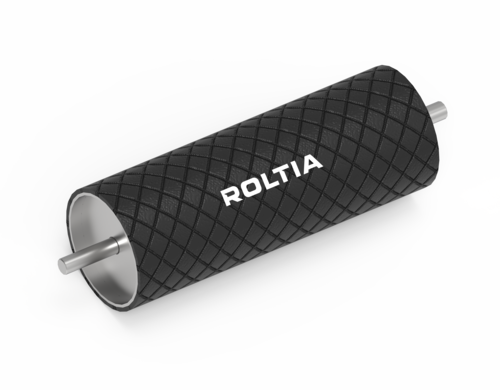Drums are typically made from carbon steel or stainless steel, depending on factors such as required strength, environmental corrosion, and workload. Carbon steel drums are most common due to their strength and long lasting, while stainless steel drums are ideal for corrosive environments.
They can be classified as head or traction drums, tail or return drums, inflection drums, counterweight drums, etc. The head drums are responsible for providing traction to the conveyor belt, the tail drums allow the return of the belt and the inflection and counterweight drums generate the appropriate tension for optimal operation of the belt.
In addition, drums can be provided with special lagging to improve their performance and extend their life. Some of the most common lagging are vulcanized rubber, smooth or grooved (diamond, herringbone, etc.) and a standard hardness of 70° Sh. These coatings can provide properties such as wear resistance, additional traction, noise reduction and corrosion protection.
To sum up, the choice of the right drum type and material, as well as the application of specific coatings, are key aspects to consider in order to ensure optimal and efficient operation of conveyor belts in various industries.
- TUBE. The drum shell is machined from seamless perforated bar of E355 steel, up to an external diameter of 500 mm. They can be machined with conicity as required.
- SHAFT. Manufactured from F-114 or ST-52 laminated steel.
- HEAD. Manufactured from laser-cut sheet steel.
- MACHINED END CAP FOR HUB. Machined from F-114 or ST-52 rolled steel, with dimensions according to the Tollok type fixing hub.

